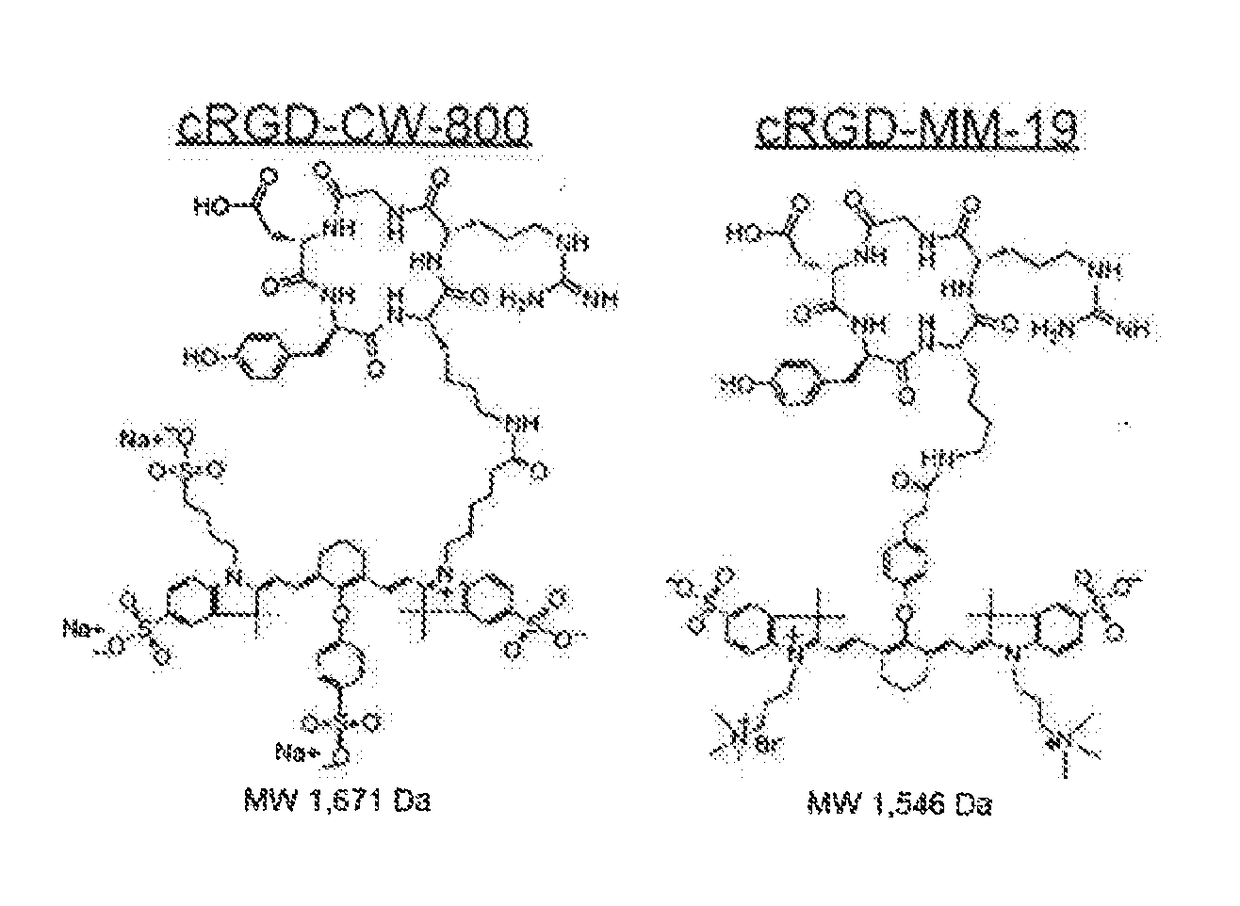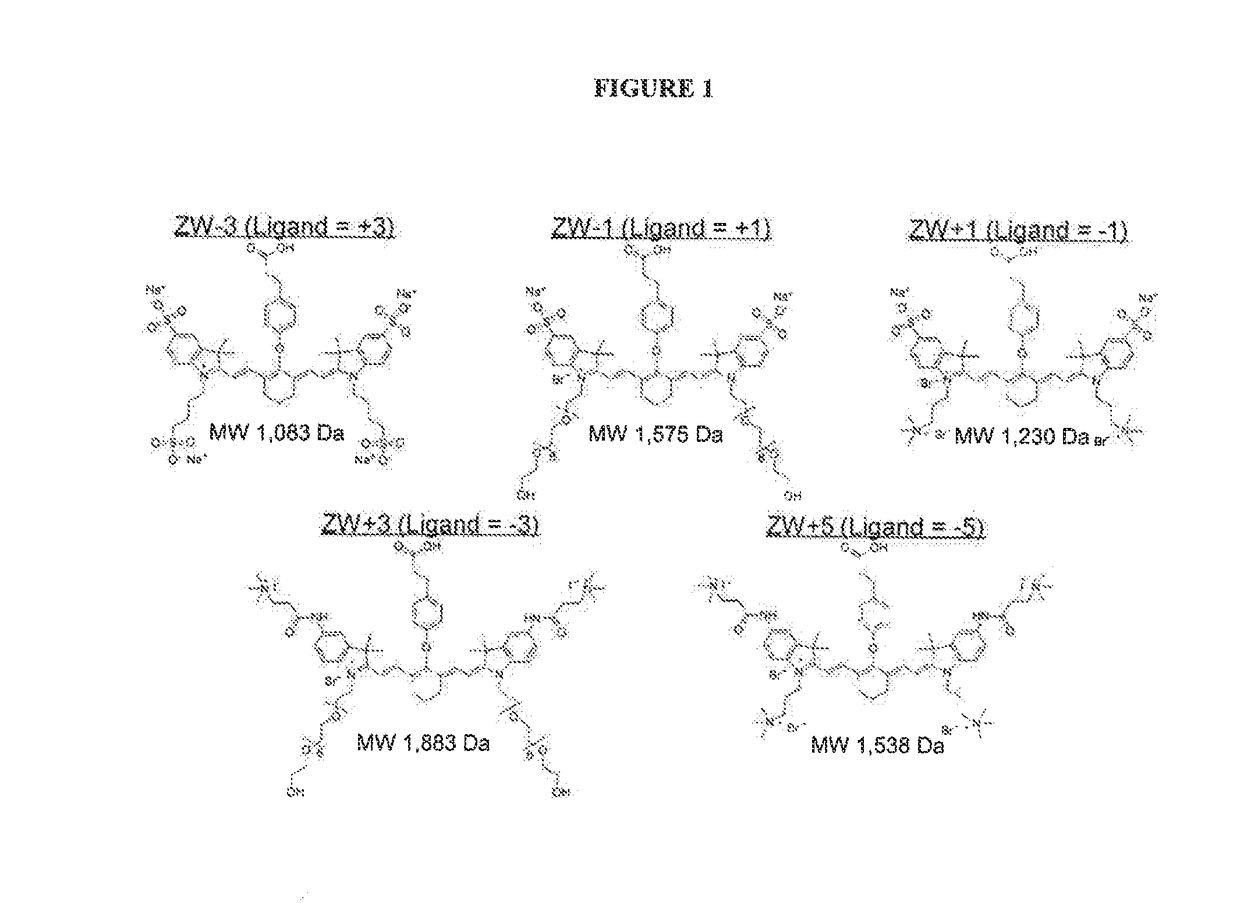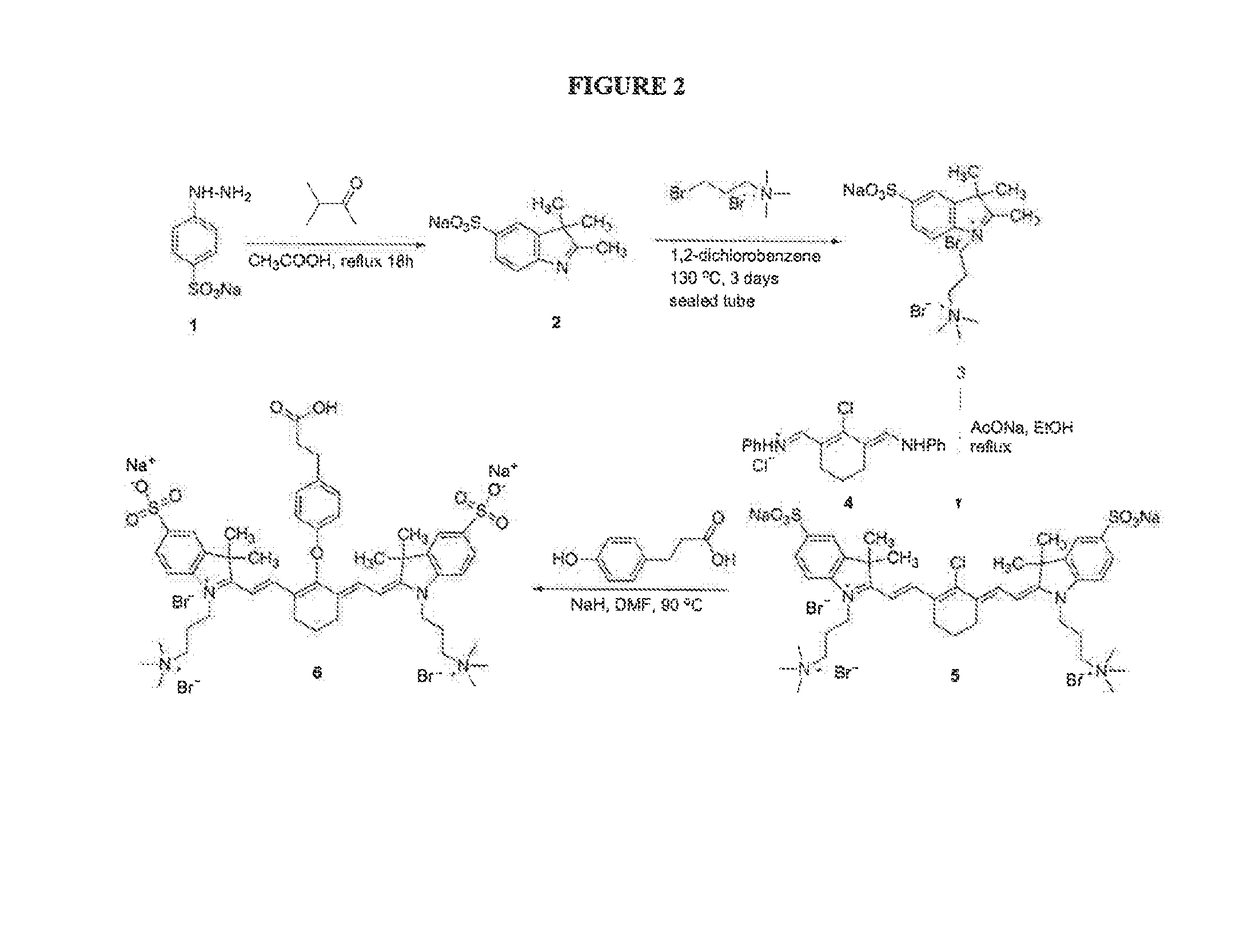Use of charge-balanced imaging agents for determining renal function
a charge-balanced imaging and renal function technology, applied in the field of optically imaging tissues or cells, can solve the problems of inability to obtain suitable fluorophores as imaging agents, inability to achieve in vivo properties of most current fluorophores, undesirable fluorescence throughout the gastrointestinal tract, etc., and achieve superior clinical imaging characteristics and improved in vivo properties.
- Summary
- Abstract
- Description
- Claims
- Application Information
AI Technical Summary
Benefits of technology
Problems solved by technology
Method used
Image
Examples
example 1
[0229]FIG. 1 depicts certain dyes that can be used in the imaging methods of the invention. Note that for molecules ZW−3, ZW−1, ZW+1, ZW+3, and ZW+5, a targeting ligand would have to be introduced having a +3, +1, −1, −3, and −5 charge, respectively, to achieve neutrality.
example 2
on of Dye ZW+1
[0230]Dye ZW+1 (see FIG. 1) was made according to the synthetic procedure depicted in FIG. 2. Sodium 4-hydrazinylbenzenesulfonate (1) was reacted with 3-methylbutan-2-one to form the 2,3,3-trimethyl-3H-indole derivative (2). The indole nitrogen was then capped by reaction with 3-bromo-N,N,N-trimethylpropan-1-aminium bromide, and the product (3) reacted with the 2-chloro-3-((phenylamino)methylene)cyclohex-1-enypmethylene)benzenaminium compound (4) to yield the Cyanine dye (5). A linking group was attached by reaction of (5) with 3-(4-hydroxyphenyl)propanoic acid to thin’ the ZW+1 dye (6). See also Mojzych, M. et al. “Synthesis of Cyanine Dyes” Top. Heterocycl. Chem. (2008) 14:1-9; Sysmex Journal International (1999), Vol. 9, No. 2, pg 185 (appendix); Strekowski, L. et al. Synthetic Communications (1992), 22(17), 2593-2598; Strekowski, L. et al. J. Org. Chem. (1992) 57, 4578-4580; and Makin, S. M. et al. Journal of Organic Chemistry of the USSR (1977) 13(6), part 1, 1093...
example 3
on of Dye ZW+5
[0231]Dye ZW+5 (see FIG. 1) can be made according to the synthetic procedure depicted in FIG. 3. The first step involves alkylation of indolenine 7. The resultant quaternary salt 8 can be allowed to react with 3-aminopropanoyl chloride (in the form of an ammonium salt to protect the amino group). Then the terminal amino group can be quaternized with excess of methyl iodide to give the bis-quaternary salt 9. The subsequent steps 9→10→11 are analogous to the synthesis described in Example 2 above. Ion exchange can be used to prepare final products with a single counter anion such as chloride or bromide.
[0232]The presence of a quaternary ammonium cation close to the aromatic ring may inhibit formation of the final dye. Accordingly, a short spacer between the aromatic ring and the ammonium group of ZW+5 can be introduced.
[0233]Purification can be accomplished through silica gel chromatography or reverse-phase chromatography under both high and low-pressure conditions. Size...
PUM
| Property | Measurement | Unit |
|---|---|---|
| pH | aaaaa | aaaaa |
| molecular weight | aaaaa | aaaaa |
| wavelength | aaaaa | aaaaa |
Abstract
Description
Claims
Application Information
 Login to View More
Login to View More - R&D
- Intellectual Property
- Life Sciences
- Materials
- Tech Scout
- Unparalleled Data Quality
- Higher Quality Content
- 60% Fewer Hallucinations
Browse by: Latest US Patents, China's latest patents, Technical Efficacy Thesaurus, Application Domain, Technology Topic, Popular Technical Reports.
© 2025 PatSnap. All rights reserved.Legal|Privacy policy|Modern Slavery Act Transparency Statement|Sitemap|About US| Contact US: help@patsnap.com



